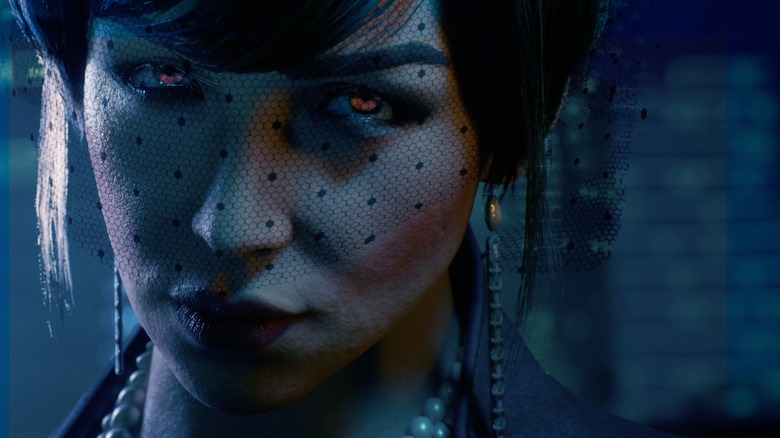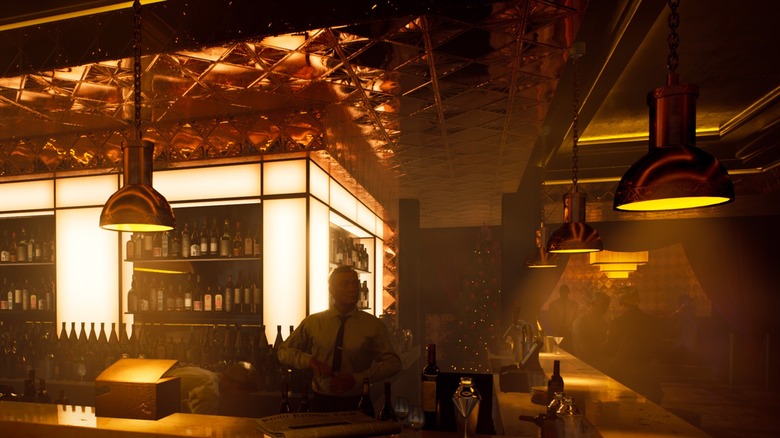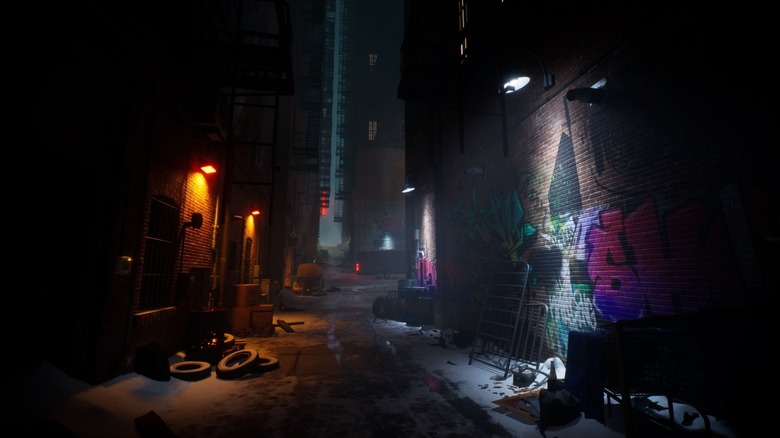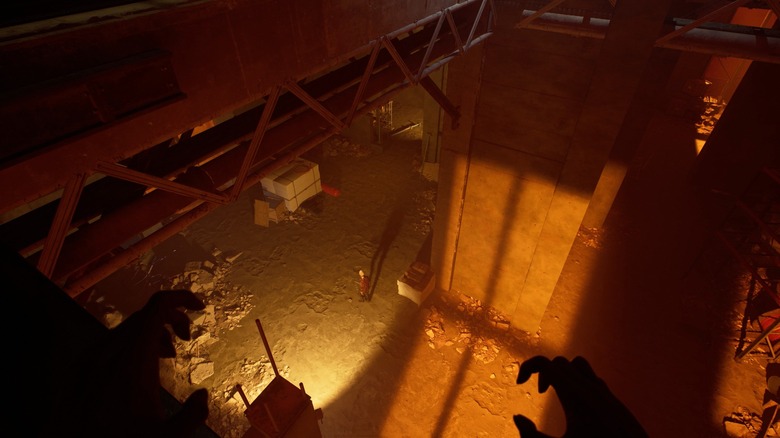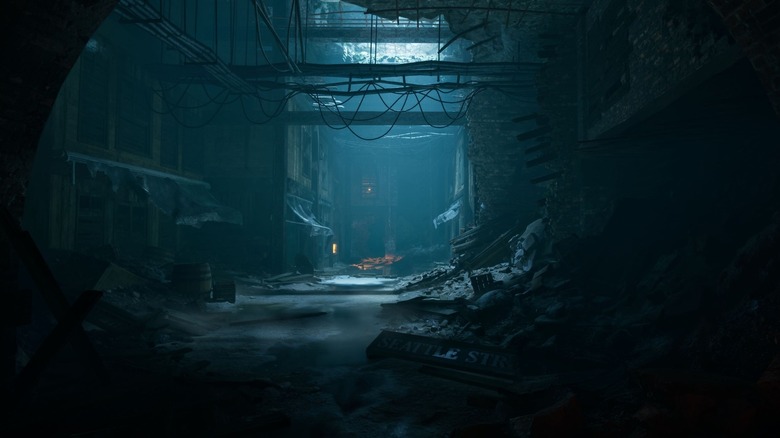The Chinese Room On Making Bloodlines 2 While Staying True To The Shadows & World Of Darkness - Exclusive
The Chinese Room has long been a studio that turns the ordinary into the extraordinary. Known for taking everyday settings and infusing them with the exceptional, the studio's latest venture, "Bloodlines 2," promises to offer a riveting narrative experience set in a deeply imagined universe. This new chapter in the World of Darkness universe is not just a sequel but a fresh portal, welcoming both newcomers and series veterans into a captivating tale of choices and consequences.
With a unique blend of action and role-playing elements, "Bloodlines 2" isn't expected to be just another game — rather, it's an experience designed to keep players on the edge of their seats. The game dives into complex characters and intricate stories, set against the dark, gritty, and diverse backdrop of Seattle.
In an exclusive interview with SVG at PAX West 2023, The Chinese Room's Arone Le Bray and Keiko Kasai, Principal Narrative Designer and Lead Character Artist, respectively, talked about the making of "Bloodlines 2," the challenges and joys of staying true to a rich source material, and how they aim to be inclusive in their storytelling. They also discussed the future of the franchise and its place in the broader narrative landscape of World of Darkness.
Welcome, all!
Let's start with the good ol' elevator pitch. What would you like people to know about "Bloodlines 2?"
Arone Le Bray: I would say the elevator pitch is action, RPG, character, tone, and story first. We want the players to own their outcome in the journey.
On that note, obviously, this is "Bloodlines 2." Are newcomers welcome to this next chapter? Do they need to have played the first one, and how did you navigate that sort of balance for veterans and newcomers?
Keiko Kasai: I'll use myself as an example because prior to coming to The Chinese Room, I didn't know a lot about "Bloodlines." Of course, after getting to know more about it, I was really captivated by the stories.
World of Darkness is so huge. The lore itself is so powerful. It's very story-driven with an emphasis on storytelling. So, as someone who is new to the franchise, and new to World of Darkness, I was captivated by these amazing, amazing stories and characters and such. And I truly believe that other people will be interested as well once they get to learn more about this game.
Le Bray: One of the nice things about TCR [The Chinese Room] is that we are a studio that takes normal everyday places, places that people understand — like, "Everybody's Gone to the Rapture" is about a nice, quaint, little British town — but "Bloodlines 2" is about Seattle. So it's a place that exists. It has all these diverse people in there ... and then in the undercurrent, 'Oh yeah: also, they might drink your blood and do all that kind of stuff.' All these characters and all these people have their own objectives, their own goals, wants, needs, and motivations, and it's how they bounce off of each other and the player character. That's where all the drama and all the fun comes from.
So, as far as does a player need to be fully immersed in this? No. And as you can see with all the other World of Darkness things ... you can jump into the board game. You can jump into "Justice." You can jump into "Bloodlines." We're gonna do everything we can to welcome people. There's already plenty of stuff there for everyone who's coming back, but if we leave other people out by the side, then it's not as much fun.
Inclusive and authentic
And that's a theme that "Bloodlines" conveyed — focusing on these marginalized groups of people. Is it safe to say that spirit will be kept alive in "Bloodlines 2?"
Le Bray: Yeah, absolutely. We spend a lot of time behind the scenes at TCR in Brighton. It's a very diverse place. It's like Seattle. We have a lot of people working in the studio who identify from many different cultures, and many different genders.
Kasai: Very inclusive.
Le Bray: Extremely inclusive.
Kasai: It's a reflection of the people who work in the company. We also have to ensure that it's believable and that people can relate to it.
Le Bray: We also have professional sensitivity leaders [for help with] character biographies, images, dialogue ... we've sent them various versions of the script and things like that so that we can make sure we're not being accidentally offensive or inauthentic. Because it's one thing if we are pushing buttons to call attention to a problem. That's great. If we are pushing buttons and we are pushing people away as a result of it? That's gross. And I hate it. I don't want it. It's much more interesting to get the authentic stories of other people.
Utilizing fan feedback
How much fan feedback from the previous game factored into the development of "Bloodlines 2?"
Kasai: We are fortunate because we have a lot of World of Darkness fans that are working on the project. It's such a delight because they know so much about the lore and everything. For example, someone pointing out, 'Oh, you can't use that for this because X, Y, and Z.'
Le Bray: Things that have helped — our community managers actually run one-off tabletop games with different groups within the studio. And because there are a lot of people who are remote as well, we can do that kind of thing. I think in the game I ran, I had a producer, a narrative designer, a lighting artist, myself, and two-level designers. We ran through this nice little thing where we built characters and went through all these scenarios. There's just so much in the IP.
Kasai: And at the same time, of course, we're in touch with World of Darkness with everything that's coming up because it's huge. It's such a huge story and narrative. We are staying true to the source material. It's super amazing working with World of Darkness and how they gave us that space and opportunity to explore underexplored narratives.
Continuing to build out the World of Darkness universe
As you're building this game, how much thought goes into, 'We're just building this game,' versus, 'We're building this game with the foresight of future plans or other games in the pipeline?'
Le Bray: The best way to think about it is that "Bloodlines 1" wasn't really called "Bloodlines 1." We are building another tent pole in this world in the same way that the board game, and then "Justice," and "Swan Song" did. All those things are here as a vignette into those worlds. We've even looked at things like "Winter's Teeth," the comic that came out ... I've read that a few times because I'm a comic fan. I'm a tabletop top fan. This is where I live.
It is extremely humbling to be part of that. And to ... I want to say, 'stake a claim to it,' but it's more like putting the next brick onto there so that other people can build on it in the future if they need to, or if they want to. Or if we want to.
This interview has been edited for clarity.

